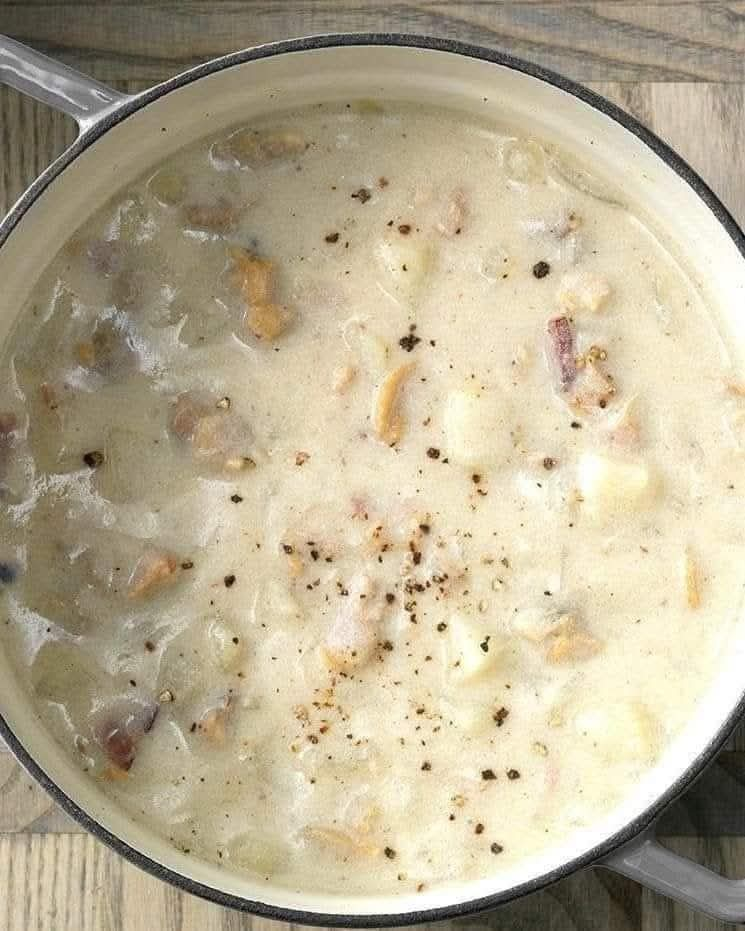Clam chowder is a comforting and hearty dish that has been cherished for generations. With its creamy texture, savory flavors, and satisfying ingredients, it is the perfect meal for cold days or when you need a taste of the sea. Making clam chowder at home is easier than you might think, and with the right steps, you can create a bowl of deliciousness that rivals any restaurant.
The History of Clam Chowder
Clam chowder has its roots in the coastal regions of the United States, particularly New England. Originating in the 18th century, it was brought to America by European settlers and quickly became a staple in coastal kitchens. The use of clams, potatoes, and cream reflects the abundant resources of the region. Over time, variations like Manhattan Clam Chowder and Rhode Island Clam Chowder emerged, each with unique ingredients and flavors. However, the creamy New England-style clam chowder remains the most beloved.
Essential Ingredients for Clam Chowder
To make the perfect clam chowder, you’ll need a combination of fresh ingredients and pantry staples. The key components include:
Clams: Fresh clams are ideal, but canned clams work perfectly and save time. Reserve the juice for extra flavor.
Potatoes: Use russet or Yukon Gold potatoes for their creamy texture.
Bacon: Provides a smoky depth of flavor and adds richness to the dish.
Onions and Celery: These aromatics create a flavorful base.
Garlic: A touch of minced garlic enhances the overall taste.
Chicken Broth or Clam Juice: The liquid base adds a savory, briny depth.
Heavy Cream: Creates the luscious, creamy texture clam chowder is known for.
Seasonings: Fresh thyme, bay leaf, salt, and black pepper bring the dish together.
Step-by-Step Guide to Making Clam Chowder
Creating clam chowder from scratch is a straightforward process when you follow these steps:
Start by cooking diced bacon in a large pot over medium heat until crispy. The bacon adds a smoky flavor and creates drippings that will enhance the dish. Remove the bacon and set it aside, but keep the drippings in the pot.
Add diced onions and celery to the bacon drippings and sauté for about 4-5 minutes, until softened. Stir in minced garlic and cook for an additional minute, releasing its fragrant aroma.
Sprinkle all-purpose flour over the sautéed vegetables, stirring constantly for 1-2 minutes to form a roux. This step is crucial for thickening the chowder.
Gradually whisk in chicken broth and the reserved clam juice. Stir in heavy cream to create a rich and creamy base. Add diced potatoes, fresh thyme, and a bay leaf, then bring the mixture to a gentle boil. Reduce the heat and simmer for 15-20 minutes, stirring occasionally, until the potatoes are tender and the flavors meld together.
Stir in the canned clams with their juice and simmer for another 5 minutes. Avoid overcooking the clams, as they can become rubbery. Remove the bay leaf and taste the chowder, adjusting the seasoning with salt and black pepper as needed.
Serving Clam Chowder
Ladle the hot clam chowder into bowls and garnish with crispy bacon bits and fresh parsley. Serve with oyster crackers or a slice of crusty bread for a satisfying meal. Pair the dish with a crisp white wine or a refreshing iced tea to complement the creamy and savory flavors.
Tips for the Best Clam Chowder
To ensure your clam chowder turns out perfect every time, keep these tips in mind:
Use fresh clams whenever possible for the best flavor. If using canned clams, do not discard the juice—it adds depth to the broth.
Do not overcook the clams, as they can become tough and chewy. Add them at the end of the cooking process.
Stir the chowder gently while simmering to avoid breaking up the potatoes or burning the bottom of the pot.
Allow the chowder to rest for a few minutes before serving, as the flavors intensify over time.
Variations of Clam Chowder
While the traditional New England-style clam chowder is a classic, there are several variations to explore:
Manhattan Clam Chowder replaces the creamy base with a tomato-based broth, creating a lighter, tangy version of the dish. Rhode Island Clam Chowder omits the cream and tomatoes, resulting in a clear, brothy soup that highlights the clams’ natural flavor. For a unique twist, try adding corn kernels, smoked paprika, or a splash of white wine to your chowder.
Storing and Reheating Clam Chowder
Clam chowder stores well and makes for excellent leftovers. Allow the chowder to cool completely before transferring it to an airtight container. Store it in the refrigerator for up to three days. To reheat, warm the chowder on the stove over low heat, stirring occasionally to prevent curdling. Avoid reheating it multiple times, as this can compromise the texture and flavor.
Why Make Clam Chowder at Home?
Making clam chowder at home allows you to customize the recipe to your liking. You can control the ingredients, ensuring freshness and quality, and adjust the seasoning to suit your taste. Additionally, homemade clam chowder is often more economical than store-bought or restaurant versions, and the satisfaction of creating this comforting dish from scratch is unparalleled.
Conclusion
Clam chowder is a timeless dish that brings warmth and comfort to any table. By following this guide, you can master the art of making creamy, flavorful clam chowder at home. Whether served as a main course or a starter, this dish is sure to impress family and friends. Embrace the tradition of clam chowder, and enjoy the rich flavors of the sea in every spoonful.
